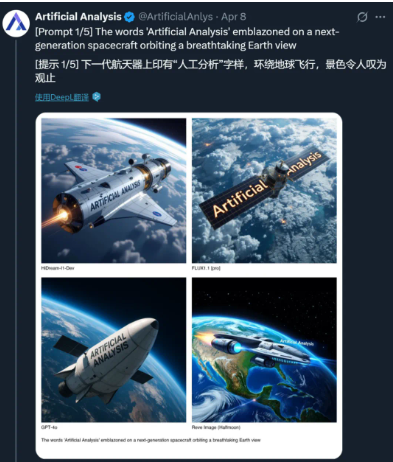OpenAI has announced a major update to ChatGPT: a new image library feature is now live, allowing users to view, edit, and share all images generated through the GPT-4o model in a unified interface. This feature is being rolled out gradually to free, Plus, and Pro users, significantly enhancing the user experience in AI image generation.

Image Library: One-Stop Management for AI Creations
ChatGPT's image library provides a centralized platform for storing and managing all images generated using GPT-4o. Whether it's artwork based on text prompts or stylized content transformed from user-uploaded images (like Studio Ghibli style or cartoon effects), all creations are automatically archived in the library. Users can access this feature via the "Library" tab in the mobile app or the ChatGPT website, easily browsing their history, editing existing images, or sharing directly to social media.
On mobile, the image library interface now includes a "Make Image" button, allowing users to initiate new image generation tasks with a single click, simplifying the workflow. This feature is fully launched on iOS and Android apps, with the web version gradually being rolled out and expected to cover all users within a few days. AIbase testing shows that the image library supports time-based sorting, keyword search, and batch operations (such as deleting or downloading), greatly improving creative efficiency.
Technical Support: GPT-4o's Image Generation Capabilities
The launch of the image library is thanks to the powerful image generation capabilities of the GPT-4o model. Since its release to free users at the end of March 2025, GPT-4o has generated over 700 million images, with over 130 million users globally, sparking viral creative trends including Ghibli-style art and personalized AI avatars. Compared to the previous DALL·E 3, GPT-4o excels in detail rendering, text embedding, and complex instruction processing. It can generate complex scenes with up to 20 objects and supports various artistic styles, such as pixel art and Picasso-style.
The image library not only archives creative work but also allows users to re-edit existing images. For example, users can upload generated images and ask ChatGPT to adjust colors, style, or add elements (like changing the background to a night sky). This feature lowers the barrier to entry for professional image editing software, providing a convenient creative tool for non-professional users.
Safety and Transparency: Watermarks and Privacy Protection
To address the potential risks of AI-generated content, OpenAI adds a digital watermark (image-gen-watermark-for-free) to images generated for free users to identify their AI origin. Plus and Pro users can choose to save watermark-free images to meet more advanced creative needs. Furthermore, ChatGPT's image library adheres strictly to OpenAI's privacy policy; users can delete their history at any time or disable the memory function through settings to ensure data security.
AIbase notes that OpenAI has recently relaxed restrictions on generating images of public figures, allowing it in specific contexts (such as satire or political commentary), but explicitly prohibits generating offensive or misleading deepfake images. These measures aim to balance creative freedom with content safety, providing users with responsible AI tools.
The launch of the image library further solidifies ChatGPT's leading position in the AI content creation field. In personal creation, users can use the image library to organize inspiration, iterate on works, quickly generate social media content, or create personalized gifts. In marketing and education, businesses can use it to generate customized visual content to enhance brand appeal, while educational institutions can use it for teaching demonstrations or interactive lesson development. Market data shows that the AI image generation market is expected to exceed $3 billion in 2025, and this ChatGPT update will undoubtedly accelerate industry growth.
It's worth noting that OpenAI is exploring a social networking platform based on its image generation capabilities, and the image library may become part of its underlying infrastructure. This move could transform ChatGPT from a tool-based product into a more social ecosystem, competing with existing platforms.










